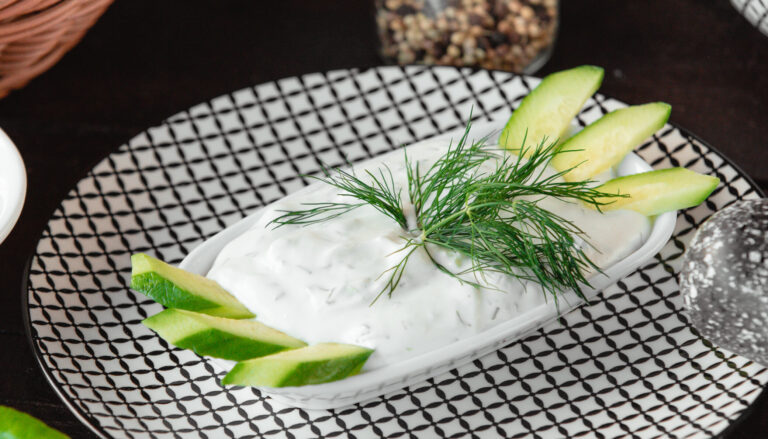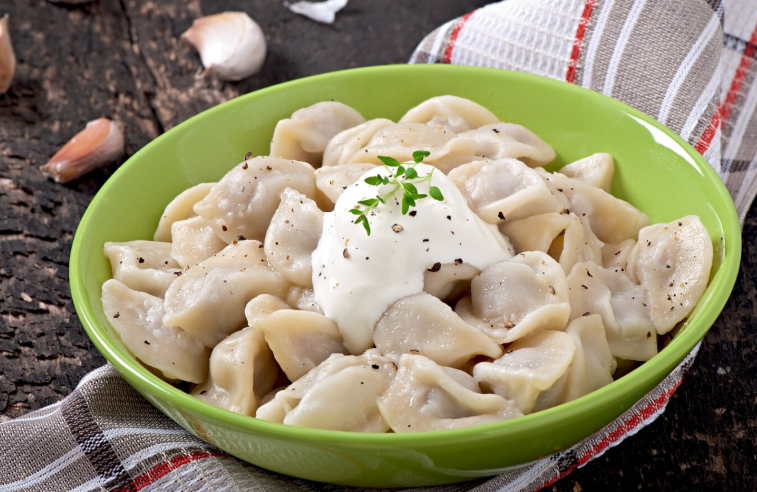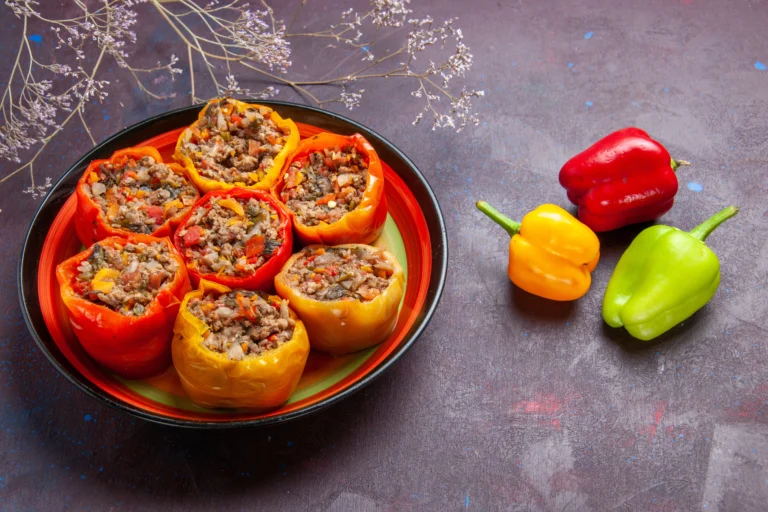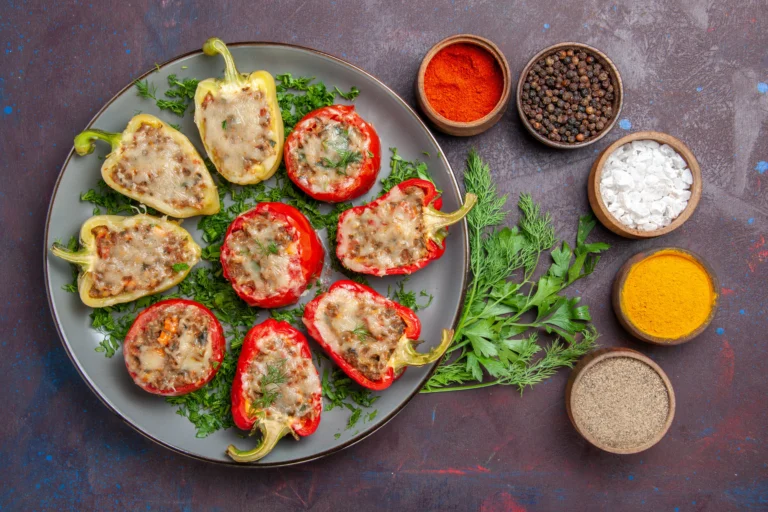The Ultimate Guide to Crispy Swiss Rösti Potatoes
Picture yourself standing in your kitchen, the morning sun streaming through your windows, and the most incredible aroma filling the air. That unmistakable scent of golden potatoes sizzling in butter creates the perfect crispy crust that gives way to tender, fluffy interior. This is the magic of authentic Swiss Rösti potatoes – a dish that transforms humble ingredients into pure comfort food perfection.
You’ve probably attempted making rösti at home before, only to end up with soggy disappointment instead of that coveted restaurant-quality crispiness. Today, we’re changing that. This comprehensive guide will walk you through every technique and insider tip you need to create incredible crispy Swiss rösti potatoes in your own kitchen.
Table of Contents
What Makes Swiss Rösti Potatoes So Special?
Swiss rösti represents more than just grated potatoes – it’s a culinary tradition dating back centuries in Switzerland. Unlike regular hash browns, rösti involves forming grated potatoes into one large, cohesive pancake that’s cooked as a single piece. This technique creates distinct textures: a golden, crispy exterior surrounding a fluffy, tender center.
The secret lies in understanding that rösti is fundamentally about contrast. You’re seeking that perfect balance between the satisfying crunch of the crust and the comforting softness within. Regional variations across Switzerland showcase different approaches, but the core principle remains unchanged: achieving textural perfection through proper technique.
Essential Ingredients for Perfect Swiss Rösti Potatoes
Choosing the Right Potatoes
Your potato selection determines your rösti’s success. High-starch varieties like Russets or Yukon Golds work exceptionally well because their starch content helps bind the grated pieces together while creating maximum crispiness. These potatoes also develop that coveted golden-brown color when properly cooked.
Fresh potatoes consistently outperform stored ones. Look for firm specimens without soft spots or sprouting eyes. The natural sugars in fresh potatoes contribute to better browning and enhanced flavor development.
Required Ingredients
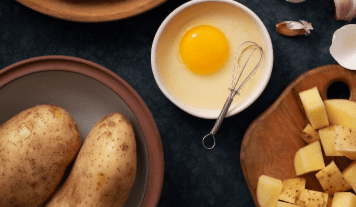
| Ingredient | Quantity (Serves 4) | Purpose |
|---|---|---|
| Potatoes | 2 lbs (900g) | Main base |
| Butter | 3-4 tbsp | Flavor & crispiness |
| Salt | 1 tsp | Seasoning |
| Black Pepper | 1/2 tsp | Seasoning |
Quality matters significantly here. Unsalted European-style butter provides rich flavor without excess sodium, while coarse sea salt enhances the potato’s natural taste better than table salt.
Step-by-Step Crispy Swiss Rösti Recipe
Preparation Phase
Start by washing and peeling your potatoes thoroughly. You have two preparation methods: using raw potatoes or par-boiling them first. Raw potatoes create a more rustic texture, while par-boiled ones offer easier handling and more consistent results.
If choosing the par-boiling method, cook whole potatoes for 15-20 minutes until barely tender. Cool them completely – preferably overnight in your refrigerator. This cooling period allows starches to set properly, making grating easier and improving final texture.
The Grating Technique
Timing is everything with grating. Work quickly to prevent browning, using the large holes of a box grater or food processor with a coarse grating disc. Grate directly into a clean kitchen towel or cheesecloth.
Here’s where most people stumble: moisture removal. Wrap your grated potatoes tightly in the towel and squeeze firmly, removing as much liquid as possible. This step is non-negotiable for achieving crispiness. Repeat the squeezing process twice, using fresh towels if necessary.
Cooking Method: Achieving Perfect Golden Crust
Heat a 10-12 inch non-stick or well-seasoned cast iron pan over medium heat. Add half your butter, allowing it to melt and begin foaming slightly. This indicates the correct temperature for adding potatoes.
Spread your grated potatoes evenly in the pan, forming a cohesive layer about half an inch thick. Season with salt and pepper, then press down gently with a spatula to compact the surface. This pressing helps create better binding between potato strands.
Cook undisturbed for 12-15 minutes. Resist the urge to peek or move the rösti. You’ll know it’s ready when the edges turn golden brown and the entire disc moves freely when you shake the pan gently.
The Critical Flip
This moment separates successful rösti from broken disasters. Place a large plate over the pan, then quickly invert both together. The cooked side should now face up on the plate. Add remaining butter to the pan, then carefully slide the rösti back in, uncooked side down.
Cook the second side for 8-10 minutes until equally golden and crispy. The finished rösti should sound hollow when tapped lightly with a spatula.
Professional Tips for Extra Crispy Swiss Rösti Potatoes

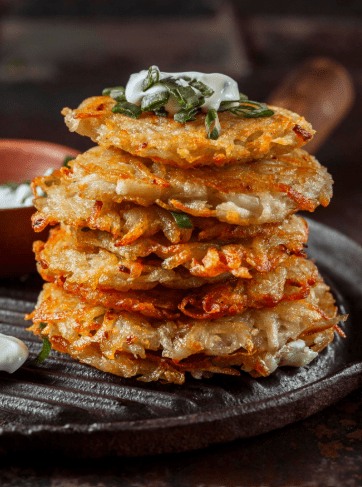
Temperature control separates good rösti from exceptional ones. Medium heat allows proper crust development without burning the exterior before the interior cooks through. Higher temperatures create bitter, burnt flavors, while lower heat results in soggy, pale rösti.
Consider these advanced techniques:
- Double-cooking method: Par-boil potatoes one day ahead, grate and form rösti, then refrigerate overnight before final cooking
- Cheese variations: Fold in grated Gruyère or Emmental during the grating stage for authentic Swiss flavor
- Herb integration: Fresh thyme or rosemary mixed with grated potatoes adds aromatic complexity
Common Mistakes to Avoid
Your rösti fails when you:
- Skip proper moisture removal
- Use medium-high or high heat
- Flip too early before proper crust formation
- Overcrowd smaller pans instead of using appropriate sizes
- Add too much seasoning that draws out moisture
Serving Suggestions and Perfect Pairings
Traditional Swiss breakfast pairs rösti with fried eggs, creating a satisfying meal that sustained mountain workers for generations. The runny yolk mixing with crispy potatoes creates textural harmony that’s hard to beat.
Modern applications include:
- Foundation for breakfast bowls topped with fresh vegetables
- Side dish for roasted chicken or beef
- Brunch centerpiece alongside smoked salmon and fresh herbs
- Holiday morning tradition replacing standard breakfast potatoes
Troubleshooting Your Swiss Rösti Potatoes
Soggy Results: Usually indicates insufficient moisture removal or cooking temperature too low. Always squeeze grated potatoes thoroughly and maintain steady medium heat.
Falls Apart During Flipping: Often caused by attempting the flip too early. Wait until edges are deeply golden and the rösti moves freely in the pan.
Burnt Exterior, Raw Interior: Your heat is too high. Reduce temperature and extend cooking time for even heat penetration.
Lacks Crispiness: This points to excess moisture or insufficient cooking time. Focus on thorough drying and patient cooking until properly golden.
Storage and Reheating Excellence
Leftover rösti keeps well in your refrigerator for up to three days when wrapped properly. For reheating, your oven provides the best results: place on a baking sheet at 350°F for 8-10 minutes until heated through and crispy again.
Avoid microwaving, which creates steam and destroys the carefully developed crust. If you must use a microwave, follow immediately with a quick pan-searing to restore crispness.
Conclusion
Mastering crispy Swiss rösti potatoes requires understanding the balance between technique and patience. Your success depends on quality ingredients, proper moisture control, and maintaining appropriate cooking temperatures throughout the process.
Each attempt brings you closer to that perfect combination of golden, crispy exterior and fluffy, tender interior that makes this dish irresistible. Remember, even experienced cooks needed practice to perfect their rösti technique.
Ready to transform your breakfast game? Gather your ingredients today and start practicing this time-honored Swiss tradition. Share your rösti creations with family and friends – they’ll be amazed by your newfound culinary expertise. Don’t forget to experiment with different potato varieties and discover which combination works best in your kitchen. Your perfect Swiss rösti adventure begins now!



